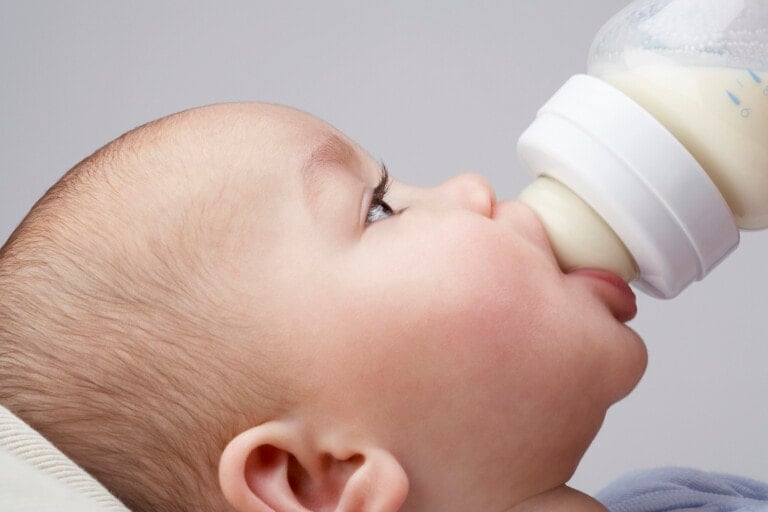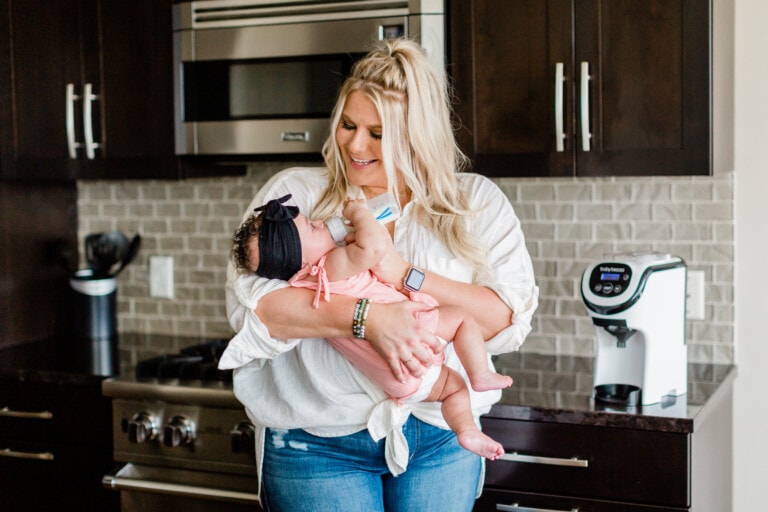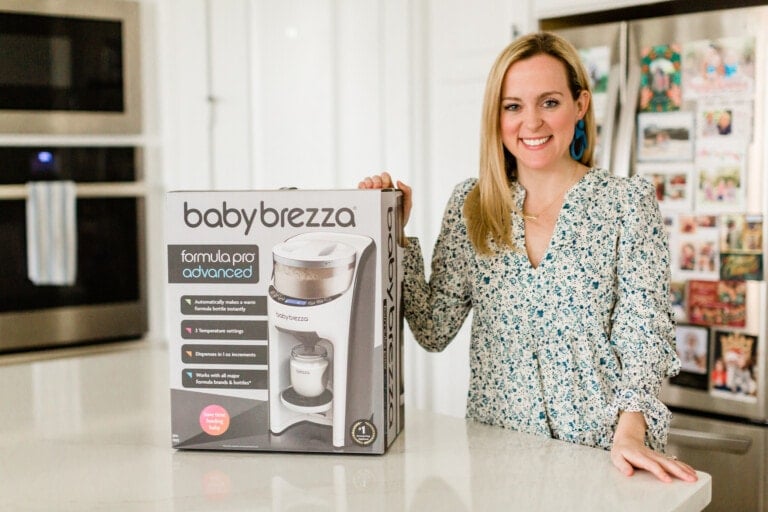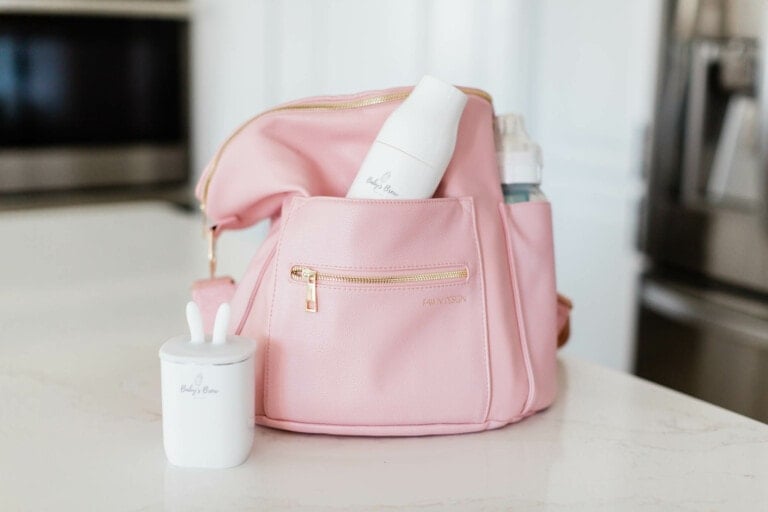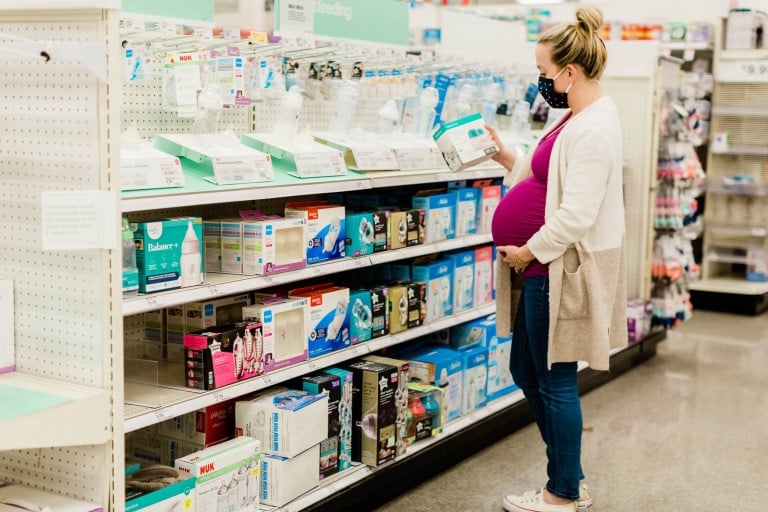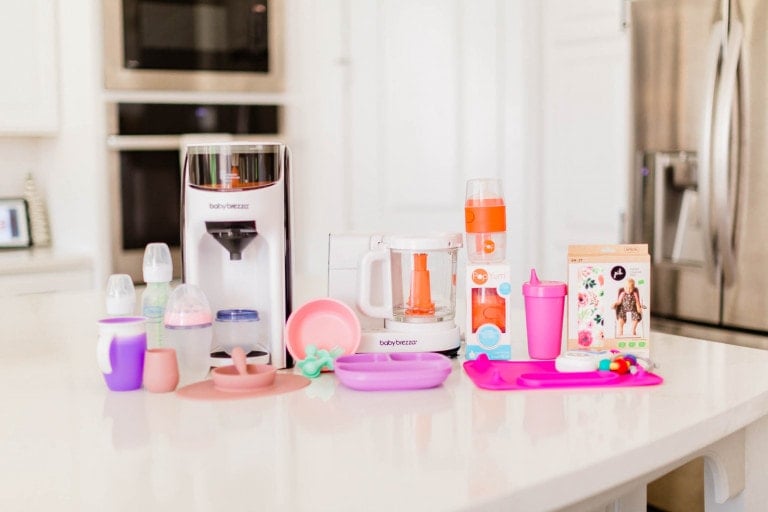Some mothers nurse their infants, some mothers bottle-feed, and some (a lot) do both. For exclusively breastfeeding, bottles are an amazing tool to help provide breastmilk to the baby while you’re separated or if others are helping you with feeding. If you’re combo-feeding or providing both breastmilk and formula, bottles can give a busy mother a breastfeeding option that may be more manageable and sustainable. If you’re supplementing or combo-feeding because of low milk supply and necessity, bottles are what can make breastfeeding possible.
Transitioning From Breast to Bottle
How we approach the juggle between breast and bottle is slightly different depending on what factors are involved and our unique priorities in feeding. Some may prioritize sustaining and complementing milk production. Others may have a more flexible approach where bottles support different needs. No matter the why behind our tango between the two, here are some practices to help ease the transitions from breast to bottle and back:
Keep an even ratio of one pump session per bottle.
If you’re exclusively breastfeeding and want to incorporate bottles in feeding, it’s important to maintain production by pumping or hand-expressing. Your breasts will need to be drained for each bottle baby is provided with. In this way, your body will sustain the milk you’re producing. We don’t want a bottle to replace a feed unless your breasts are drained simultaneously because that decreases milk production. If you’re not exclusively breastfeeding or combo-feeding out of preference, milk production is sustained by how often you nurse or pump outside of bottles. You may not follow this pump session per bottle ratio.
Paced bottle feeding with preemie nipple or slowest flow tolerated by baby.
One of the biggest worries, when you’re in this breast and bottle juggle is whether baby will develop a “bottle preference.” Babies generally won’t prefer a bottle to a breast, but they can develop a flow preference. This is especially true if the speed of milk they receive in a bottle is much faster than what they’d receive while nursing. Paced feeding with a slow-flow nipple can help reduce the risk of flow preference by mimicking patterns of milk flow that baby would receive at the breast.
Nursing before a bottle to encourage efficient breast draining.
If you’re combo-feeding out of necessity because you have a low milk supply, it’s a great practice to first offer the breasts before supplementing with a bottle. Supplementing doesn’t decrease supply if you’re offering the right amount. It fills in the gaps and provides the nutrients baby needs. Understanding the natural milk production patterns your body goes through daily usually means supplement volumes throughout the day will vary.
Most mothers find they have much more milk in the middle of the night and early morning. Supply decreases by dinner time before increasing again in response to sleep at night. Supplementing the right amount means using what milk you have and filling in the gaps without overfilling them. It’s not uncommon for the first supplemental feed volumes of the day to be very small or not needed, with that supplemental volume slowly increasing until bedtime. Working with an IBCLC to determine what daily supplement is necessary can be beneficial in formulating a long-term feeding plan.
Offering a volume-appropriate feed.
In the same way that we don’t want baby to develop a flow preference, we also don’t want baby to be over-fed. Overfeeding can happen more easily when a grandparent or caretaker looks after the baby and is in charge of bottle feeds. Overfeeding can have a negative impact on breastfeeding because baby’s hunger is what usually drives milk production. When babies are hungry, they suckle at your breast and remove milk, and in response, hormonal reactions occur. Those hormonal reactions instruct your body to create more milk. This pattern continues until weaning. If a baby receives too much milk during a feed, they’ll likely nurse later than usual.
That delay in feeding will delay the hormonal responses that would have otherwise occurred earlier in the day or at a shorter interval. This can decrease your milk production. If you’re exclusively breastfeeding, an appropriate feed volume will vary depending on how often you usually drain breasts. For example, if you’re exclusively breastfeeding and usually nurse about ten times a day, we wouldn’t expect beyond about 3 ounces for a feed, depending on the time of day. If you usually only nurse around seven times daily, that bottle may be closer to 4-5 ounces. These are only examples, and each person has their own unique experience. So always seek the assistance of an IBCLC if you need individualized support in identifying proper bottle volumes for your child.
Comfort nursing to strengthen positive associations at the breast.
One obstacle some families face while incorporating bottles into breastfeeding is a baby who struggles with breast refusal. The most beneficial practice to encourage good associations at the breast is making nursing a comfort tool for the baby. Comfort nursing is the practice of nursing outside of the sole intention of providing nutrition. It can be provided in times of boredom, in response to an emotional need, and most often, it happens before sleep. Nursing to sleep is one of the most beneficial comfort nursing practices to keep baby content and enjoy nursing, even while bottles are offered.
Transitioning back and forth from bottle to breast is an option many of us use while breastfeeding. If you’re ever struggling to navigate the breast and bottle juggle, connect with an IBCLC for more individualized support.























